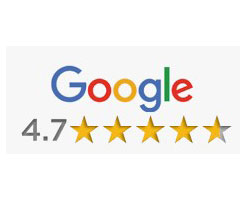Today's FHA Multifamily Loan Rates
FHA Multifamily Loan Rates - Updated 1/10/26
| FHA Multifamily Loan Programs | Free Loan Quote | ||
|---|---|---|---|
| Loan Type | Rate* | LTV | |
| FHA 223(f) | 5.18% plus MIP | Up to 85% | |
| FHA 221(d)(4) | 5.63% plus MIP | Up to 85% | |
Everything You Need to Know About FHA and HUD Multifamily Loans
FHA multifamily loans, often referred to as HUD multifamily loans, are government-backed financing solutions administered through the U.S. Department of Housing and Urban Development (HUD). These loans are designed to support investors, developers, and property owners looking to acquire, build, or rehabilitate multifamily properties. FHA-insured HUD loans provide long-term, low-interest funding with high loan-to-value (LTV) ratios, making them one of the most attractive options in the multifamily loan market.
What Are FHA Multifamily Loans?
- HUD-insured financing programs designed for larger rental properties, including apartment complexes, senior housing, and mixed-use developments.
- Provides stability, affordability, and long-term financing options backed by HUD.
- Offers higher loan-to-value ratios and lower fixed interest rates compared to conventional multifamily loans.
Who Qualifies for an FHA Multifamily Loan?
- Property Cash Flow & Occupancy: Strong rental income and stabilized occupancy rates improve approval chances under HUD multifamily loan guidelines.
- Loan Purpose: Used for acquisition, construction, refinancing, or major renovations.
- Property Type: Eligible for apartment buildings, assisted living facilities, and mixed-use properties with at least 85% residential space, per HUD standards.
Advantages of FHA Multifamily Loans
- Higher loan-to-value (LTV) ratios, up to 85% LTV for acquisitions and refinancing.
- Long-term fixed rates with financing terms ranging from 35 to 40 years.
- Lower interest rates due to HUD-backed FHA insurance, offering below-market rates.
- Non-recourse financing: Borrowers aren’t personally liable beyond the property itself.
- Assumable loans: FHA-insured HUD loans can be transferred to new buyers, increasing property resale value.
Challenges of FHA Multifamily Loans
- Longer approval process due to extensive HUD underwriting and review requirements.
- Strict property standards requiring compliance with HUD safety and maintenance guidelines.
- Limited to residential properties, FHA and HUD multifamily loans cannot finance retail, office spaces, or industrial properties.
Common FHA Multifamily Loan Programs
- FHA 223(f) Multifamily Loan: Best for acquiring or refinancing stabilized multifamily properties under HUD guidelines, with up to 35-year amortization and low fixed rates.
- FHA 221(d)(4) Multifamily Construction Loan: Designed for new construction or major renovations, offering 40-year fixed financing after an interest-only construction period.
- FHA 223(a)(7) Refinancing Loan: Allows borrowers with existing FHA-insured HUD loans to refinance at lower rates and extend loan terms.
- FHA 241(a) Supplemental Loan: Provides additional funding for property improvements, expansions, or energy efficiency upgrades.
- FHA 232 Healthcare Loan Program: A HUD multifamily loan program tailored for senior living and healthcare facilities, including assisted living, nursing homes, and memory care units.
Is an FHA Multifamily Loan Right for You?
- Best for developers seeking construction financing for new multifamily housing.
- Ideal for investors looking to acquire or refinance stabilized apartment buildings.
- A great choice for property owners needing long-term financing for senior housing and healthcare facilities.
- Suitable for those seeking high leverage and low fixed interest rates for long-term investments.
While FHA multifamily loans, also known as HUD multifamily loans, provide exceptional financing benefits, they also require a longer underwriting process and compliance with HUD regulations. Consulting an FHA-approved HUD multifamily lender can help determine if this financing option aligns with your investment goals.
FHA Multifamily Loan Benefits
FHA Multifamily Loan rates start as low as 5.18% (as of January 10th, 2026)
• A commercial mortgage broker with over 30 years of lending experience
• No upfront application or processing fees
• Simplified application process
• Up to 85% LTV on multifamily
• Terms and amortizations up to 35-40 years
• Loans for purchase and refinance, including cash-out and construction
• Quick pre-approvals with no cost and no obligation
Our Reviews
FHA and HUD Multifamily Loan Types
FHA multifamily loans, also commonly referred to as HUD multifamily loans, provide long-term, low-interest financing solutions for property investors, developers, and healthcare facility owners. These government-backed loan programs offer stability, high loan-to-value ratios, and extended amortization periods. Below are the primary FHA- and HUD-insured multifamily loan programs available:
FHA 223(f) Multifamily Loan Program

The FHA 223(f) program, administered through HUD, provides long-term, fixed-rate financing for the purchase or refinance of existing multifamily properties. With terms up to 35 years and high loan-to-value (LTV) ratios, this HUD multifamily loan program is ideal for investors seeking stable, low-interest financing.
Learn MoreFHA 221(d)(4) Multifamily Loan Program

The FHA 221(d)(4) loan is a HUD multifamily construction financing program designed for developers seeking new construction or substantial rehabilitation financing. It features interest-only payments during construction, followed by a fully amortizing 40-year fixed term.
Learn MoreFHA 223(a)(7) Multifamily Loan Program

The FHA 223(a)(7) program is a HUD-insured refinancing option for existing FHA multifamily loans. It allows property owners to secure lower interest rates, extend loan terms, and reduce annual debt service while maintaining HUD loan insurance.
Learn MoreFHA 241(a) Multifamily Loan Program

The FHA 241(a) program is a HUD multifamily supplemental loan that provides additional financing for existing FHA-insured properties. This program is commonly used for property expansions, energy-efficient upgrades, and large-scale capital improvements.
Learn MoreFHA 232/223(f) Healthcare Loan Program

The FHA 232/223(f) loan is a HUD healthcare and multifamily loan program providing long-term financing for the acquisition or refinance of residential healthcare properties. Eligible assets include nursing homes, assisted living facilities, and similar properties, with loan terms of up to 35 years.
Learn MoreMultifamily Bridge to FHA Loans

Multifamily bridge loans provide short-term financing for property acquisitions and renovations while awaiting HUD approval for long-term FHA multifamily loans. These loans allow investors to close quickly and transition into permanent FHA-insured HUD financing.
Learn More



